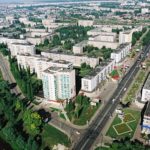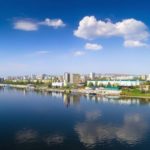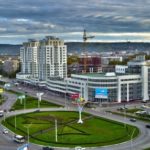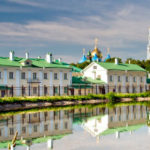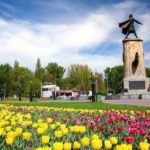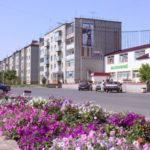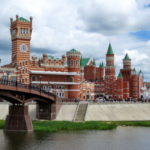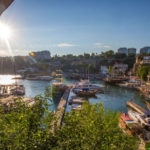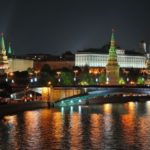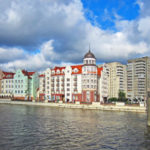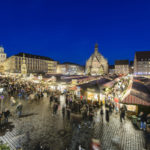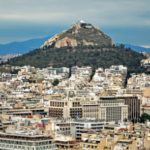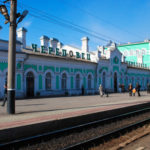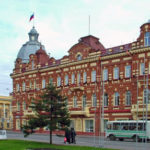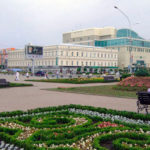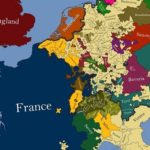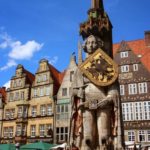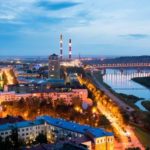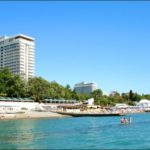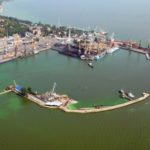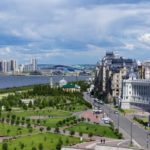Interesting facts about Perm
 The European city of Perm, stretching not far from the ancient Ural Mountains, is the most important transportation hub and economic center of this whole part of Russia. Over a million people call it their home, and many Perm citizens are sincerely proud of their city, cozy, beautiful and comfortable for life. Well, those who are tired of the city bustle, waiting for the amazing nature of the Urals, one has only to go out of town.
The European city of Perm, stretching not far from the ancient Ural Mountains, is the most important transportation hub and economic center of this whole part of Russia. Over a million people call it their home, and many Perm citizens are sincerely proud of their city, cozy, beautiful and comfortable for life. Well, those who are tired of the city bustle, waiting for the amazing nature of the Urals, one has only to go out of town.
The population of the city is growing steadily, and it has already firmly established itself in the list of million-plus cities in Russia.
More people live here than in most European capitals, and three times more than all the Maldives combined.
Year after year, Perm is included in the list of the most green Russian cities.
When looking at the map of Perm, it is immediately noticeable that the city was built on the grid principle. Almost all the streets intersect each other at right angles.
Perm produces one third of all plastic bank cards issued in Russia.
For 17 years, this city was called Molotov, in honor of the famous politician.
The first university in the whole Urals was opened precisely in Perm, back in 1916, a year before the revolution.
Perm became the first cities in the Urals, in which Russian settlers entrenched themselves.
Three of the guns installed on the famous cruiser Aurora were produced in Perm.
Perm belongs to Eastern Europe, being one of its largest cities. But further on, beyond the Urals, Asia begins.
The area of Perm is 13 times larger than the area of the Republic of San Marino, a dwarf European state.
Initially, the word “Perm” meant not the name of the city, but the name of the people who inhabited these lands.
In 1918, the first postage stamps in the Soviet Union were issued in Perm.
Permian geological period was named by scientists in honor of this city.
Being a city of elongated shape, the length among all cities of Russia Perm is second only to Sochi and St. Petersburg.
Radio was invented by Perm Alexander Popov.
The first diamond in Russia was found in 1829 in the Perm province.
On the territory of the city there are a lot of ravines along which small rivers flow.
The lowest and highest temperatures ever recorded in Perm were -47.1 and +37.2 degrees, respectively.
The world famous Venice stands on the water, more precisely, Venetian buildings stand on wooden stilts. Almost all of them are made of Perm wood.
About 29 thousand rivers flow through Perm and Permsky Krai, the total length of which reaches 90 thousand kilometers.
Urban forests in Perm occupy almost 50% of the territory.
The city grew out of the village of Himshikha, which began to grow rapidly after a copper smelting plant was built near it at the beginning of the 18th century.
Empress Catherine II bore the title of “Princess of Perm”.
Primitive people lived on modern Permian lands millions of years ago, back in the Stone Age.
Aboriginal Permians usually pronounce the name of the city as “Perm”, with a soft “p”.
Convicts who went to Siberia usually went through Perm to Siberia. In this capacity, even Fyodor Dostoevsky managed to come here.
From the late 40s to the early 90s, Perm was a closed city. Even foreigners were not allowed here.
The famous ballet Cinderella was created by Sergei Prokofiev in part precisely here, in Perm, in 1943.
It was Perm that became the first Ural city through which the railway was laid.
